
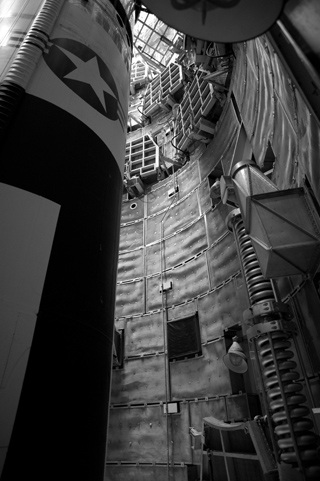 If you can climb a fifteen foot ladder and fit through a two foot diameter hole,
you can,
with a bit of advance planning,
take an extensive "top-to-bottom" tour of a Titan II ICBM launch complex, complete with missile silo and missile. Best of all, you no longer have to trespass or join the Air Force to do it.
If you can climb a fifteen foot ladder and fit through a two foot diameter hole,
you can,
with a bit of advance planning,
take an extensive "top-to-bottom" tour of a Titan II ICBM launch complex, complete with missile silo and missile. Best of all, you no longer have to trespass or join the Air Force to do it.
And so I just returned from Sahuarita, AZ and the Titan Missile Museum, a place known during most of the cold war as SMS Launch Site 571-7. I spent the better part of the day beneath the surface of the earth, part of a group of six hardy nuclear tourists under the direction of Lt. Col. Chuck Smith (USAF, retired, a former "missileer" at the site), exploring the nuts, bolts and welds of Armageddon.
At the peak of the cold war, there were over 1,000 nuclear missiles in buried silos located throughout sparsely populated areas of the continental United States, all fueled and ready to be launched toward the Soviet Union on a few minutes notice. From 1963 through 1984, this included 54 Titan II missiles at sites in Arizona, Arkansas and Kansas, each equipped with a W-53 warhead capable of delivering a nine megaton thermonuclear yield. Nine megatons is horrifically destructive even by the outsized standards of atomic bombs, capable of leveling a good size city in a single blast. And the Soviets had at least as many similar weapons aimed right back at us.
How did we keep from blowing ourselves up for all those years?
This week in Chicago, Micah Sherr, Gaurav Shah, Eric Cronin, Sandy Clark, and I have a paper at the ACM Computer and Communications Security Conference (CCS) that's getting a bit more attention than I expected. The paper, Can They Hear Me Now? A Security Analysis of Law Enforcement Wiretaps [pdf] examines the standard "lawful access" protocols used to deliver intercepted telephone (and some Internet) traffic to US law enforcement agencies. Picking up where our 2004 analysis of wireline loop extender wiretaps [pdf] left off, this paper looks at the security and reliability of the latest communications surveillance standards, which were mandated by the 1994 Communications Assistance for Law Enforcement Act (CALEA). The standards, it turns out, can leave wiretaps vulnerable to manipulation and denial of service by surveillance targets who employ relatively simple technical countermeasures.
Of particular concern to law enforcement and others who rely on wiretap evidence is the fact that the protocols can be prevented not just from collecting accurate call content (which can already be obscured by a target using encryption), but also from collecting the metadata record -- who called whom and when. Metadata-only taps (called "pen registers" for historical reasons) make up more than 90% of legal wiretaps in the US. Call metadata, which over time reveals a suspect's "community of interest" and behavior patterns, can be more revealing to an investigator than the content. Many agencies use software that automatically aggregates and analyzes call metadata to discover the members (and structure) of suspected criminal networks.
The wiretap standard, called ANSI J-STD-025, was originally designed to cover only the low-bandwidth voice telephone services that existed in the early 1990's. But as the communications services that law enforcement agencies might want to tap have expanded -- think SMS, 3G internet, VoIP, and so on -- the standard has been "patched" to allow the delivery of more and more different kinds of traffic. Unfortunately, many of these new services are a poor fit for the tapping architecture, especially in the way status messages are encoded for delivery to law enforcement and in the way backhaul bandwidth is provisioned. In particular, many modern services make it possible for a wiretap target to generate messages that saturate the relatively low bandwidth "call data channels" between the telephone company and the government, without affecting his or her own services. Worse, these channels are shared among all the taps in a particular central office, so a single person employing countermeasures can suppress wiretaps of other targets as well.
Just to be clear, we don't suggest that anyone actually do these things in the hopes of thwarting a government wiretap. Aside from being somewhat technically difficult, there would be no way to be sure that the countermeasures were actually working. And I know of no evidence that criminals are actually using these techniques today. (Of course, a determined and technically savvy criminal could prove me wrong about this.)
The real problem is that these protocols -- used in the most serious criminal investigations -- were apparently designed and deployed (and mandated in virtually every communications switch in the US) without first subjecting them to a meaningful security analysis. They were engineered to work well in the average case, but ignored the worst case of an adversary trying to create conditions unfavorable to the eavesdropper. And as the services for which these protocols are used have expanded, they've created a wider range of edge conditions, with more opportunities for manipulation and mischief.
That's a familiar theme for security engineers, and the CALEA wiretap standard is hardly the first example of a serious protocol being deployed without considering what an adversary might do. Unfortunately, it probably won't be the last, either.
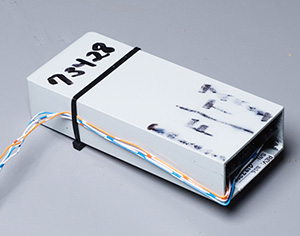 I wrote the "Secure Systems" column in the September/October 2009
IEEE Security and Privacy, which is hitting the streets just about
now. You can read the full column, "Taking Surveillance
out of the Shadows", at
www.mattblaze.org/papers/mab-sec-200909.pdf [pdf]. The subject, familiar to readers here, is
wiretapping gone wrong.
I wrote the "Secure Systems" column in the September/October 2009
IEEE Security and Privacy, which is hitting the streets just about
now. You can read the full column, "Taking Surveillance
out of the Shadows", at
www.mattblaze.org/papers/mab-sec-200909.pdf [pdf]. The subject, familiar to readers here, is
wiretapping gone wrong.
Wiretapping has been controversial lately, often framed, rightly or wrongly, as a zero-sum battle between our right to privacy on the one hand and the needs of law enforcement and intelligence agencies on the other. But in practice, surveillance is about more than policy and civil liberties -- it's also about technology. Reliably intercepting traffic in modern networks can be harder than it sounds. And, time and again, the secret systems relied upon by governments to collect wiretap intelligence and evidence have turned out to have serious problems. Whatever our policy might be, interception systems can -- and do -- fail, even if we don't always hear about it in the public debate.
Indeed, the recent history of electronic surveillance is a veritable catalog of cautionary tales of technological errors, risks and unintended consequences. Sometime mishaps lead to well-publicized violations of the privacy of innocent people. There was, for example, the NSA's disclosure earlier this year that it had been accidently "over-collecting" the communications of innocent Americans. And there was the discovery, in 2005, that the standard interfaces intended to let law enforcement tap cellular telephone traffic had been hijacked by criminals who were using them to tap the mobile phones of hundreds of people in Athens, Greece.
Bugs in tapping technology don't always let in the bad guys; sometimes they keep out the good guys instead. Cryptographers may recall the protocol failures in the NSA's "Clipper" key escrow system [pdf], in which wiretaps could be defeated easily by exploiting a weak authentication scheme during the key setup. More recently, there was the discovery in 2004, by Micah Sherr, Sandy Clark, Eric Cronin and me, that law enforcement intercepts of analog phones can be disabled just by sending a tone down the tapped line [pdf].
What's going on here? It's hard to think of another law enforcement technology beset by as many, or as frequent, flaws as are modern wiretapping systems. No one would tolerate a police force regularly hobbled by exploding guns, self-opening handcuffs, stalled radio cars, or contaminated evidence bags. Yet many of the systems we depend on to track suspected criminals and spies have failed just as spectacularly, if more quietly.
A common factor in these failed systems is that they were designed and deployed largely in secret, away from the kind of engineering scrutiny that, as security engineers know well, is essential for making systems robust. It's a natural enough reflex for law enforcement and intelligence agencies to want to keep their surveillance technology under wraps. But while it may make sense to keep secret who is under surveillance, there's no need to keep secret how. And the track record of current systems suggests a process that is seriously, even dangerously, broken.
Fortunately, unlike some aspects of the debate about wiretapping,
reliability isn't a political issue. The flaws in these systems
cut across ideology. No one is served by defective technology
that spies on the wrong people or that lets criminals, spies, or
terrorists evade legal wiretaps. If surveillance is to
protect us, it has to come out of the shadows.
Photo: Law enforcement "loop extender" tap for analog phone lines.
Stewart Baker, former director of policy at the Department of Homeland Security, the parent agency of the TSA, took me to task for my recent posting about the new TSA boarding pass scanners being installed at airport security checkpoints.
My observation was that the ID checkpoint is insufficient and in the wrong place; fixing the Schneier/Soghoian attack requires that a strong ID check be performed at the boarding gate, which the new system still doesn't do. Stewart says that the TSA security process doesn't care what flight someone is on as long as they are screened properly and compared against the "no fly" list.
Maybe it doesn't; the precise security goals to be achieved by identifying travelers have never been clearly articulated, which is an underlying cause of this and other problems with our aviation security system. But the TSA has repeatedly asserted that passenger flight routing is very much a component of their name screening process. For example, the regulations governing the Secure Flight program published last October in the Federal Register [pdf] say that "... TSA may learn that flights on a particular route may be subject to increased security risk" and so might do different screening for passengers on those routes. I don't know whether that's true or not, but those are the TSA's words, not mine.
Anyway, Stewart's confusion about the security properties of the protocol, and about my reasons for discussing them notwithstanding, the larger point is that aviation security is a complex (and interesting) problem in the discipline that I've come to understand as "human-scale security protocols".
I first wrote about human scale security as a computer science problem back in 2004 in my paper Toward a broder view of security protocols [pdf]. Such protocols share much in common with the cryptographic authentication and identification schemes used in computing: they're hard to design well and they can fail in subtle and surprising ways. Perhaps cryptographers and security protocol designers have something to contribute toward analyzing and designing better systems here. We can certainly learn something from studying them.
In 2003, Bruce Schneier published a simple and effective attack against the TSA's protocol for verifying a flyer's identity on domestic flights in the US. Nothing was done until 2006, when Chris Soghoian, then a grad student at Indiana University, created an online fake boarding pass generator that made it a bit easier to carry out the attack. That got the TSA's attention: Soghoian's home was raided by the FBI and he was ordered to shut down or face the music. But the TSA still didn't change its flawed protocol, and so for more than five years, despite the inconvenience of long security lines and rigorous checks of our government-issue photo IDs at the airport, it has remained possible for bad guys to exploit the loophole and fly under a fake name. I blogged about the protocol failure, and the TSA's predictably defensive, shoot-the-messenger reaction to it, in this space a couple of years ago.
Well, imagine my surprise yesterday when I noticed something new at Philadelphia International Airport: the TSA ID checker was equipped not just with the usual magnifying glass and UV light, but with a brand new boarding pass reader. The device, which did not yet seem to be in use, apparently reads and validates the information encoded on a boarding pass and displays the passenger name as recorded in the airline's reservation record. According to the TSA blog, boarding pass readers are being rolled out at selected security checkpoints, partly to to enable "paperless" boarding passes on mobile phones, but also to close the fake boarding pass loophole.
Unfortunately, the new system doesn't actually fix the problem. The new protocol is still broken. Even when the security checkpoint boarding pass readers are fully operational, it will still be straightforward to get on a flight under a false name.
I'm not sure how often I'll actually update it, but I've got a Twitter feed now: twitter.com/mattblaze
Even if you can't say it in an SMS message, it still might be worth saying. I suspect I'll still mainly be using this blog.
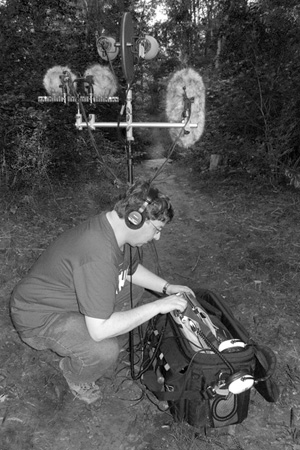 It's the holiday weekend, so today's (overdue) entry has perhaps
less to do with computer security and crypto than usual.
It's the holiday weekend, so today's (overdue) entry has perhaps
less to do with computer security and crypto than usual.
I'm interested in techniques for capturing the ambient sounds of places and environments. This kind of recording is something of a neglected stepchild in the commercial audio world, which is overwhelmingly focused on music, film soundtracks, and similarly "professional" applications. But field recording -- documenting the sounds of the world around us -- has a long and interesting history of its own, from the late Tony Schwartz's magnetic wire recordings of New York city street life in the the 40's and 50's to the stunning natural biophonies hunted down across the world by Bernie Krause. And the Internet has brought together small but often quite vibrant communities of wonderfully fanatic nature recordists and sound hunters. But we're definitely on the margins of the audio world here, specialized nerds even by the already very geeky standards of the AV club.
We tend to take the unique sounds of places for granted, and we may not even notice when familiar soundscapes radically change or disappear out from under (or around) us. And in spite of the fact that high quality digital audio equipment is cheaper and more versatile than ever, hardly anyone thinks to use a recorder the way they might a digital camera. Ambient sound is, for most purposes, as ephemeral as it ever was. I commented last year in this space on the strange dearth of available recordings of David Byrne's Playing the Building audio installation; Flickr is loaded with photos of the space, but hardly any visitors thought to capture what it actually sounded like. And now, like so many other sounds, it's gone.
Anyway, I've found that making good quality stereo field recordings carries its own challenges besides the obvious ones of finding interesting sounds and getting the right equipment to where they are. In particular, most research on, and commercial equipment for, stereo recording is focused (naturally enough) on serving the needs of the music industry. There the aim is to get a pleasing reproduction of a particular subject -- a musician, an orchestra, whatever -- that's located in a relatively small or at least identifiable space, usually indoors. "Ambience" in music recording has to do mainly with capturing the effect of the subject against the space. Any sounds originating from the local environment are usually considered nothing more than unwelcome noise, blemishes to be eliminated or masked from the finished product.
But the kind of field recording I'm interested in takes the opposite approach -- the environment is the subject. Most of the standard, well-studied stereo microphone configurations aren't optimized for capturing this. Instead, they're usually aiming to limit the "recording angle" to the slice where the music is coming from and to reduce the effects of everything else. There are some standard microphone arrangements that can work well for widely dispersed subjects, but most of the literature discusses them in the context of indoor music recording. It's hard to predict, without actually trying it, how a given technique can be expected to perform in a particular outdoor environment. If experience is the best teacher, it's pretty much the only one available here.
Compounding the difficulty of learning how different microphone configurations perform outdoors is the surprising paucity of controlled examples of different techniques. There are plenty of terrific nature recordings available online, but people tend to distribute only their best results, and keep to themselves the duds recorded along the way. For the listener, that's surely for the best, of course, but it means that there are lamentably few examples of the same sources recorded simultaneously with different (and documented) techniques from which to learn and compare.
And so I've slowly been experimenting with different stereo techniques and making my own simultaneous recordings in different outdoor environments. In doing this, I can see why similar examples aren't more common; making them involves hauling around more equipment, taking more notes, and spending more time in post-production than if the goal were simply to get a single best final cut. But the effort is paying off well for me, and perhaps others can benefit from my failures (and occasional successes). So I'm collecting and posting a few examples on this web page [link], which I will try to update with new recordings from time to time. But mostly, I'd like to encourage others to do the same; my individual effort is really quite pale in the grand scheme of things, limited as it is by my talent, equipment, and carrying capacity.
My sample clips, for what they're worth, can be found at www.mattblaze.org/audio/soundscapes/.
Once again I was lucky enough to be invited to this year's Interdisciplinary Workshop on Security and Human Behavior at MIT this week. Organized by Alessandro Acquisti, Ross Anderson, and Bruce Schneier, the workshop aims to bring together an aggressively diverse group of researchers from perspectives in computing, psychology, economics, sociology, and philosophy. (I blogged about last year's workshop here.)
This is a small and informal event, with no published proceedings or other tangible record. But Bruce Schneier, Adam Shostack and Ross Anderson are liveblogging the sessions.
As with last year, I ended up making quick-and-dirty sound recordings of the sessions, which I'll put up here as I process them. (I apologize for the uneven audio quality; the recording conditions were hugely suboptimal. And I didn't know I'd was supposed to be doing this until five minutes before the first session, using a recorder and microphone I luckily happened to have in my backpack.)
Update 6/12/09 1745: All session audio is now online after the fold below.
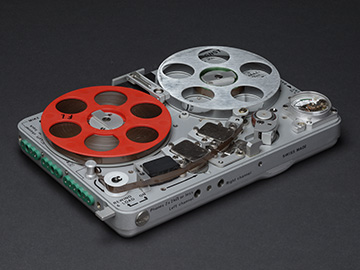 Today's
New York Times is reporting that the NSA has been "over-collecting" purely domestic telephone and e-mail traffic as part of its warrentless wiretap program. According to Eric Lichtblau and James Risen's
article, part of the reason for the unauthorized
domestic surveillance was technological:
Today's
New York Times is reporting that the NSA has been "over-collecting" purely domestic telephone and e-mail traffic as part of its warrentless wiretap program. According to Eric Lichtblau and James Risen's
article, part of the reason for the unauthorized
domestic surveillance was technological:
Officials would not discuss details of the overcollection problem because it involves classified intelligence-gathering techniques. But the issue appears focused in part on technical problems in the N.S.A.'s ability at times to distinguish between communications inside the United States and those overseas as it uses its access to American telecommunications companies' fiber-optic lines and its own spy satellites to intercept millions of calls and e-mail messages.As disturbing as this report is, the sad fact is that domestic over-collection was a readily predictable consequence of the way the NSA apparently has been conducting some of its intercepts. According to court filings in the EFF's lawsuit against AT&T, the taps for international traffic are placed not, as we might expect, at the trans-oceanic cable landings that connect to the US, but rather inside switching centers that also handle a great deal of purely domestic traffic. Domestic calls are supposed to be excluded from the data stream sent to the government by specially configured network filtering devices supplied by the NSA.One official said that led the agency to inadvertently "target" groups of Americans and collect their domestic communications without proper court authority. Officials are still trying to determine how many violations may have occurred.
This is, to say the least, a precarious way to ensure that only international traffic would be collected, and an especially curious design choice given the NSA's exclusively international mandate. My colleagues and I have been warning of the risks of this strange architecture for several years now, perhaps most prominently in this IEEE Security and Privacy article [pdf]. And I raised the point on a panel with former NSA official Bill Crowell at last year's RSA conference; as I wrote in this space then:
There's a tendency to view warrantless wiretaps in strictly legal or political terms and to assume that the interception technology will correctly implement whatever the policy is supposed to be. But the reality isn't so simple. I found myself the sole techie on the RSA panel, so my role was largely to to point out that this is as much an issue of engineering as it is legal oversight. And while we don't know all the details about how NSA's wiretaps are being carried out in the US, what we do know suggests some disturbing architectural choices that make the program especially vulnerable to over-collection and abuse. In particular, assuming Mark Klein's AT&T documents are accurate, the NSA infrastructure seems much farther inside the US telecom infrastructure than would be appropriate for intercepting the exclusively international traffic that the government says it wants. The taps are apparently in domestic backbone switches rather than, say, in cable heads that leave the country, where international traffic is most concentrated (and segregated). Compounding the inherent risks of this odd design is the fact that the equipment that pans for nuggets of international communication in the stream of (off-limits) domestic traffic is apparently made up entirely of hardware provided and configured by the government, rather than the carriers. It's essentially equivalent to giving the NSA the keys to the phone company central office and hoping that they figure out which wires are the right ones to tap.Architecture matters. As Stanford Law professor Larry Lessig famously points out, in the electronic world "code is law". Arcane choices in how technologies are implemented can have at least as much influence as do congress and the courts. As this episode demonstrates, any meaningful public debate over surveillance policy must include a careful and critical examination of how, exactly, it's done.
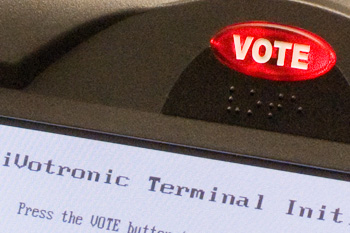 Eight Clay County, Kentucky election officials were charged last week with conspiring to alter ballots cast on electronic voting machines in several recent elections. The story was first reported on a
local
TV station and was featured on the
election integrity site BradBlog.
According to the indictment [pdf],
the conspiracy
allegedly included, among other things, altering ballots cast
on the county's ES&S iVotronic touchscreen voting machines.
Eight Clay County, Kentucky election officials were charged last week with conspiring to alter ballots cast on electronic voting machines in several recent elections. The story was first reported on a
local
TV station and was featured on the
election integrity site BradBlog.
According to the indictment [pdf],
the conspiracy
allegedly included, among other things, altering ballots cast
on the county's ES&S iVotronic touchscreen voting machines.
So how could this have happened?
The iVotronic is a popular Direct Recording Electronic (DRE) voting machine. It displays the ballot on a computer screen and records voters' choices in internal memory. Voting officials and machine manufacturers cite the user interface as a major selling point for DRE machines -- it's already familiar to voters used to navigating touchscreen ATMs, computerized gas pumps, and so on, and thus should avoid problems like the infamous "butterfly ballot". Voters interact with the iVotronic primarily by touching the display screen itself. But there's an important exception: above the display is an illuminated red button labeled "VOTE" (see photo at right). Pressing the VOTE button is supposed to be the final step of a voter's session; it adds their selections to their candidates' totals and resets the machine for the next voter.
The Kentucky officials are accused of taking advantage of a somewhat confusing aspect of the way the iVotronic interface was implemented. In particular, the behavior (as described in the indictment) of the version of the iVotronic used in Clay County apparently differs a bit from the behavior described in ES&S's standard instruction sheet for voters [pdf - see page 2]. A flash-based iVotronic demo available from ES&S here shows the same procedure, with the VOTE button as the last step. But evidently there's another version of the iVotronic interface in which pressing the VOTE button is only the second to last step. In those machines, pressing VOTE invokes an extra "confirmation" screen. The vote is only actually finalized after a "confirm vote" box is touched on that screen. (A different flash demo that shows this behavior with the version of the iVotronic equipped with a printer is available from ES&S here). So the iVotronic VOTE button doesn't necessarily work the way a voter who read the standard instructions might expect it to.
The indictment describes a conspiracy to exploit this ambiguity in the iVotronic user interface by having pollworkers systematically (and incorrectly) tell voters that pressing the VOTE button is the last step. When a misled voter would leave the machine with the extra "confirm vote" screen still displayed, a pollworker would quietly "correct" the not-yet-finalized ballot before casting it. It's a pretty elegant attack, exploiting little more than a poorly designed, ambiguous user interface, printed instructions that conflict with actual machine behavior, and public unfamiliarity with equipment that most citizens use at most once or twice each year. And once done, it leaves behind little forensic evidence to expose the deed.